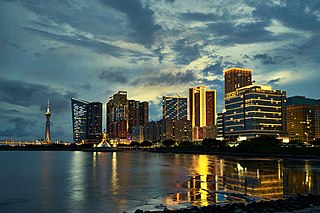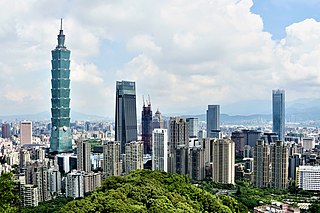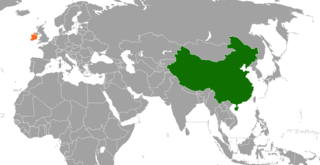
The economy of Hong Kong is a highly developed free-market economy. It is characterised by low taxation, almost free port trade and a well-established international financial market. Its currency, called the Hong Kong dollar, is legally issued by three major international commercial banks, and is pegged to the US dollar. Interest rates are determined by the individual banks in Hong Kong to ensure that they are market driven. There is no officially recognised central banking system, although the Hong Kong Monetary Authority functions as a financial regulatory authority.

The economy of Macau has remained one of the most open in the world since its handover to China in 1999. Apparel exports and gambling-related tourism are mainstays of the economy. Since Macau has little arable land and few natural resources, it depends on mainland China for most of its food, fresh water, and energy imports. Japan and Hong Kong are the main suppliers of raw materials and capital goods. Although Macau was hit hard by the 1997–98 Asian financial crisis and the early 2000s recession, its economy grew approximately 13.1% annually on average between 2001 and 2006. Macau is a full Member of the World Trade Organization. Public security has greatly improved after handover to the People's Republic of China. With the tax revenue from the profitable gambling industry, the Macau government is able to introduce the social welfare program of 15 years of free education to all Macau citizens. In 2015, Macau's economy saw a sharp decrease due to the reduced spending by visitors from Mainland China since the Anti-corruption campaign under Xi Jinping.

The economy of Taiwan is a highly developed free-market economy. It is the 8th largest in Asia and 20th-largest in the world by purchasing power parity, allowing Taiwan to be included in the advanced economies group by the International Monetary Fund. Taiwan is notable for its rapid economic development from an agriculture-based society to an industrialised, high-income country. This economic growth has been described as the Taiwan Miracle. It is gauged in the high-income economies group by the World Bank. Taiwan is one of the most technologically advanced computer microchip and high-tech electronics industries makers in the world.

The Four Asian Tigers are the developed East Asian economies of Hong Kong, Singapore, South Korea, and Taiwan. Between the early 1950s and 1990s, they underwent rapid industrialization and maintained exceptionally high growth rates of more than 7 percent a year.
The Three Links or Three Linkages was a 1979 proposal from the National People's Congress of the People's Republic of China (PRC) to open up postal, transportation, and trade links between Mainland China and Taiwan, with the goal of unifying Mainland China and Taiwan.

The Pearl River Delta Metropolitan Region is the low-lying area surrounding the Pearl River estuary, where the Pearl River flows into the South China Sea. Referred to as the Guangdong-Hong Kong-Macao Greater Bay Area in official documents, the region is one of the most densely populated and urbanized regions in the world, and is considered a megacity by numerous scholars. It is currently the wealthiest region in Southern China and one of the wealthiest regions in China along with the Yangtze River Delta in Eastern China and Jingjinji in Northern China. Most of the region is part of the Pearl River Delta Economic Zone, which is a special economic zone of China.

The Hong Kong Economic and Trade Offices (HKETOs) are the trade offices of Hong Kong outside the territory. There are 14 HKETOs outside Hong Kong and China, and seven in China.

The economy of Asia comprises about 4.7 billion people living in 50 different nations. Asia is the fastest growing economic region, as well as the largest continental economy by both GDP Nominal and PPP in the world. Moreover, Asia is the site of some of the world's longest modern economic booms.
In justifying opening up and the series of economic reforms that ensued in China, Deng Xiaoping referred to Karl Marx and his theories, which predicted that nations need to undergo urbanization and a stage of capitalism for a natural socialist transition. One of the most renowned reforms under Deng was establishing four "special economic zones" along the Southeastern coast of China, with Shenzhen, Shantou, and Zhuhai located in Guangdong province and Xiamen located in Fujian province. The four aforementioned special economic zones were all established from 1980 to 1981. As of 2024, there have been 3 additional special economic zones. In 1988, Hainan became the fifth "SEZ". In 1990, Pudong district in Shanghai became the sixth "SEZ". In 2009, Binhai district in Tianjin became the seventh "SEZ". Special economic zones (SEZs) in mainland China are granted more free market-oriented economic policies and flexible governmental measures by the government of China, compared to the planned economy elsewhere.

The Hong Kong Trade Development Council (HKTDC) is a statutory body established in 1966 as the international marketing dedicated to creating opportunities for Hong Kong's businesses. The organisation has fifty offices around the world, including 13 on the Chinese mainland. With more than 50 years of experience, its mission is to explore opportunities for Hong Kong companies, especially small and medium-sized enterprises (SMEs), and connect them with business partners around the world.
The Taiwan Miracle or Taiwan Economic Miracle refers to Taiwan's rapid economic development to a developed, high-income country during the latter half of the twentieth century.

China–Ireland relations are interstate relations of China and Ireland. Ireland and China first established their bilateral foreign relations after they signed the Communique on the Establishment of Diplomatic Relations on 22 June 1979. This milestone opened the gate for trades, businesses, politics, education, and tourism between the two countries; both nations have gained enormous growth of economic values. Both countries exchanged ambassadors in 1980. Ireland has an embassy in Beijing, a general consulate in Shanghai and an honorary consulate in Hong Kong; China has an embassy in Dublin. The first historical meeting for the two headers of China and Ireland governments took place in November 1996 when Premier Li Peng met with Taoiseach John Bruton at the World Food Summit. By 2019, this bilateral relationship has boomed to a high point, and a ceremony of their 40th anniversary of diplomatic relations was held in Dublin, Ireland in June 2019.

Western Taiwan Straits Economic Zone or West Coast Economic Zone is the proposed economic development zone for the economic region west of the Taiwan Straits by the Fujian government and the Chinese central government. This include the coastal cities of Xiamen, Zhangzhou, Quanzhou and Fuzhou along Fujian province.
The Hong Kong International Wine & Spirits Fair is a trade fair organized by the Hong Kong Trade Development Council (HKTDC), scheduled to be held annually with its inaugural event held in 2008 at the central location in Hong Kong of the Hong Kong Convention and Exhibition Centre.
HKTDC Education & Careers Expo is a platform organized by the Hong Kong Trade Development Council (HKTDC) which brings together bringing employers in contact with potential employees, and educators and professional bodies in contact with those looking to improve their skills and knowledge or to attain a professional qualification. The four-day-long fair is opened every year in the beginning of February at the Hong Kong Convention and Exhibition Centre. In 2021, the event is postponed to take place in July.
The HKTDC Trade Fairs are a series of international trade fairs held annually and organised by the Hong Kong Trade Development Council held at the Hong Kong Convention and Exhibition Centre in Hong Kong.

China–Peru relations are foreign relations between the People's Republic of China and the Republic of Peru. Peru is the first Latin American country that China established formal ties with, which was done by the Qing dynasty in August 1875. Both nations are members of the Asia-Pacific Economic Cooperation and the United Nations.
Since the late-2000s, the People's Republic of China (PRC) has sought to internationalize its official currency, the Renminbi (RMB). RMB internationalization accelerated in 2009 when China established the dim sum bond market and expanded Cross-Border Trade RMB Settlement Pilot Project, which helps establish pools of offshore RMB liquidity. The RMB was the 8th-most-traded currency in the world in 2013 and the 7th-most-traded in early 2014. By the end of 2014, RMB ranked 5th as the most traded currency, according to SWIFT's report, at 2.2% of SWIFT payment behind JPY (2.7%), GBP (7.9%), EUR (28.3%) and USD (44.6%). In February 2015, RMB became the second most used currency for trade and services, and reached the ninth position in forex trading. The RMB Qualified Foreign Institutional Investor (RQFII) quotas were also extended to five other countries — the UK, Singapore, France, Korea, Germany, and Canada, each with the quotas of ¥80 billion except Canada and Singapore (¥50bn). Previously, only Hong Kong was allowed, with a ¥270 billion quota.

France–Hong Kong relations refers to international relations between France and Hong Kong.











